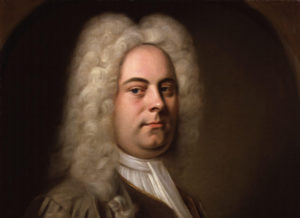The Handel and Haydn Society’s recent performance of Händel’s “Saul” in Boston has sparked conversation, especially regarding its portrayal of queer relationships. Following a spring celebration of queerness, the autumn performance of “Saul” resonated with attendees who see parallels between the biblical narrative of David and Jonathan and contemporary themes of love between men.
While some may raise objections based on traditional interpretations, the oratorio’s depiction of deep emotional connections between male characters invites a fresh perspective. It is not necessarily a Pride story, but it does challenge audiences to rethink historical masculinities and the nature of love expressed in the piece.
Musical Boldness and Performance Highlights
“Saul” stands out as a more cerebral work compared to some of Händel’s more familiar compositions. Unlike traditional operas, its storytelling is less flamboyant, even as moments like the witch of Endor’s scene could easily be staged. The music often features austere phrases over rapid coloratura, creating an atmosphere that is both bold and contemplative.
The Handel and Haydn orchestra complemented the performance with a powerful yet nuanced sound. Performing in the expansive Symphony Hall, the ensemble showcased a fuller sound, utilizing three choruses without sacrificing clarity. Despite the impressive size, some felt that the performance lacked the dramatic intensity expected from such a significant work. It seemed that conductor Jonathan Cohen opted for a more restrained interpretation, which, while pleasant, may have left some audiences yearning for a more dynamic experience.
Countertenor Christopher Lowrey, portraying David, captivated listeners with his rich timbre. His interpretation was notable for its sobriety, lacking some of the more flamboyant embellishments that one might expect. The emotional weight of his final piece, “O fatal day! How low the mighty lie!” delivered a poignant conclusion to the performance. Although Lowrey displayed beautiful vocal control, he faced challenges during the recitatives in the second act.
Standout Performers and Character Interpretations
A highlight of the evening was Linard Vrielink in the role of Jonathan. His portrayal avoided the cliché of meekness, presenting Jonathan as a heroic figure filled with charisma. Vrielink’s voice, rich in color and vibrato, brought a compelling presence to the character, underscoring the unique aspects of Händel’s work.
In contrast, Neal Davies as Saul delivered a performance marked by conviction, though he sometimes seemed overshadowed in his own oratorio. The concert format may have contributed to this perception, as moments demanding psychological depth were diluted. His phrasing occasionally lacked the vocal intensity that Händel’s compositions call for.
Soprano Sarah Brady received mixed reviews. While her instrument is undeniably beautiful, her standout moments emerged later in the performance. In the third act, her ability to navigate crescendos without compromising legato showcased her distinct artistry.
Replacing the highly sought-after Julie Roset, Amanda Forsythe took on the role of Michal with romantic charm. Though her higher range may not have been as velvety as some might prefer, Forsythe’s agility in the more intricate passages highlighted her strengths.
The performance served as a testament to Boston’s commitment to serious Baroque repertoire. While the production excelled in many areas, there is a sentiment that a staging of “Saul” could further enhance its impact. A more theatrical approach might address the perceived lack of “spiciness,” enriching the experience for audiences.
Overall, the Handel and Haydn Society’s rendition of “Saul” stands as a significant cultural event, deserving of attention from both classical music enthusiasts and those interested in the evolving narratives within historical works. The evening was not just a concert; it was a reflection on love, history, and the complexities of human relationships.
